Loafers should be snug, but not overly tight. The ball of your foot must align with the widest part of the shoe, leaving some room between the toe and front of the loafer. The shoe should fit snugly around the sides of your foot, especially the ball area, as well as the back ankle and heel.
With loafers, there isn’t much wiggle room when it comes to fit.
Sandals often have back or front openings, so accidentally going smaller isn’t a huge tragedy. Meanwhile, lace-ups give you the option of tightening or loosening the vamp.
Of course, you want all of your shoes to fit perfectly—for comfort’s sake and for your foot and back health.
I’m going to help you navigate the meager margin of error in loafer fit. It’s pretty straightforward once you know what to look for, but the devil is in the details.
Table of Contents
What is the Right Fit for Loafers?
As mentioned, loafer fit is slightly different from sneakers, other lace-ups, and even buckled shoes like monk straps. Here’s how your foot should properly sit in a loafer.
Make sure that the ball of your foot is sitting right at the shoe box, otherwise known as the widest part of the shoe’s aerial silhouette. This is your first point of alignment. You want this area of your foot and your toes to feel snug on both sides, not tight.
As with any dress shoe, you don’t want the tips of your toes flush against the front edge of the shoe. Naturally, a pointed-toe loafer will be tighter than a rounded-toe or squared-toe. Just make sure the shoe isn’t pushing up against your big toenail.
The heel and back ankle fit is what makes loafers different from lace-ups like oxfords or derbys. You want the back collar of the shoe to hug your ankle, but it’s okay if your foot has slight slippage. You just don’t want your heel to be able to completely levitate over the collar as you walk.
The reason it’s okay to have a little slippage is because this gives you room for socks. Moreover, the laceless construction means that the fit at the shoe box and the toe area is what really locks your foot into the loafer.
Again, there’s not a lot of wiggle room with loafer fit, so all of these boxes need to be checked from the get-go, even before you’ve broken the shoe in.
How Much Room Should Your Feet Have in Loafers?
The only place there should really be free space in your loafer is the toe area. Again, if your toes firmly touch the front edge, that’s way too small, and the shoe will push against your toes, which can cause ingrown nails.
The sides should be snug throughout, but especially around the ball of your foot, which we already established should sit perfectly aligned in the shoe box.
Finally, you don’t want there to be space between the back edge of the shoe and your heel.
I know I said that a little slippage in that area is okay, but that shouldn’t come from extra room on the horizontal front. Remember, the collar should be snug. If there’s space between the back of your heel and ankle and the back of the shoe, your foot won’t just be completely slipping out of the loafer as you walk but sliding back and forth within it.
The Rancourt & Co Horsebit Loafer features a refined but relaxed silhouette and an ornate horsebit. As such, you could wear this hand-built, custom-sized calfskin loafer in a range of scenarios.
Should Loafers Be Tight?
Some of you might prefer a tighter fit, while others prefer a looser one. And again, the tip of a pointier loafer will certainly be more compact. However, the key phrase here is “snug but not overly tight.”
Here are some things to consider when assessing the tightness of a loafer.
Make sure you try the loafer with the socks you plan to wear. One of the reasons the free area in front of your toe is important is that you want to wear the loafer with or without socks. Thicker, cool-weather socks will obviously add more tightness than thin dress socks or no-shows, but as long as you don’t feel discomfort, that’s fine.
Keep the loafer’s natural structure and tightness by using a shoe horn, especially for a pair of nice leather loafers.
When you’re trying new loafers on, make sure to do this closer to the end of the day rather than the beginning. This will accommodate any swelling that may happen throughout the day.
If you try on a new pair of loafers in the morning before you’ve done any substantial walking, you might think you have the right size, then find that this very pair is significantly, uncomfortably tight by the afternoon—and without laces, you have no way to loosen the fit.
Relatedly, make sure you fit your loafer to your bigger foot. Most of us will have one slightly bigger foot than the other. Dress shoes and sneakers fit differently, and even if this sizing discrepancy isn’t consequential to other dress shoes, it might be with loafers.
How Should Penny Loafers Fit?
In the shoe world, the terms “penny loafer” and “loafer” are a bit like the terms “automatic” and “mechanical” in the watch world. Just as an automatic watch is really just a type of mechanical watch, a penny loafer is simply a style of loafer. Yet, the terms are used interchangeably.
That being the case, a penny loafer should fit no differently than any other loafer: The ball of your foot aligned with the toe box, a bit of space between your toe and the front edge, and an overall snug fit on the sides, as well as the heel and ankle.
Penny loafers often have a flatter vertical silhouette. They might be snugger at the top of your foot compared to a slipper loafer with a raised lip, which is perfectly fine.
A traditional, handmade American shoe, this Oak Street Penny Loafer is relaxed yet elegant, making it easy to wear in a range of contexts. The repello suede has gorgeously deep color, as well as high weather resistance.
How to Ensure The Right Fit for Loafers
So now that you know how the loafer should feel when you’re wearing it, here’s how to ensure you get that perfect fit.
1. Measure Shoe Length
Your shoe size number corresponds to the length, and it’s probably the main sizing characteristic you use to pick shoes.
Double-check what your shoe number size is by using a Brannock device to measure the length as well as the arch (every shoe store should have one of these devices).
When you place your foot into the device, look at the number your longest toe sits at, then you’ll slide the device pointer to the ball of your foot. Whichever is the biggest number is your shoe size.
Don’t be married to this number, though, as your size will be different depending on the brand. It’s just a starting point.
The most important thing here is that, again, the ball of your foot is aligned with the shoe box.
2. Measure Shoe Width
Many of you might already know whether your foot is narrow, regular, or wide. The width bar of a Brannock can sort this out if you aren’t sure.
You’ll either be a narrow, indicated by the Brannock as an A, B, or C width, or you’ll be a regular D width, or a wide, which is an E width and beyond.
If you’re a wide size and the loafer you’re looking at only comes in a regular, then you can often go up half a size or even a full size.
3. Assess Heel Fit
You want the collar to hug your back ankle, and you don’t want any room between your heel and the back of the shoe. Snug but not tight, remember?
Test the heel slippage amount by putting your loafers on, then standing on your tip-toes. If your heels slip out completely, it’s too loose. Heck, if your heels come up more than halfway, that’s often too loose as well.
5. Ensure Space in the Toe Box
To ensure you have the right fit around the toes, assess how close the sides and the front are.
While you want the shoe to hug your pinkie and your big toe lightly, you don’t want that to be the case at the front.
As long as your toes aren’t touching the front edge of the shoe, you’re good to go.
6. Assess Comfort and Arch Support
If you have flat feet or fallen arches, you may need to add cushioned insoles. Since loafers are so low-profile, they aren’t always great for arch support.
You might also consider going for loafers with wide toe boxes and avoiding overly pointy ones.
If you have flat feet but are desperately eyeing a flat, pointed Italian loafer, I recommend sizing up and finding the right insoles to ensure maximum comfort.
7. Take Time to Break Loafers In
Let’s say you did everything right. You made sure you had minimal slippage, that the balls of your feet were where they needed to be, that there was room in the toes, and that you tried on your new loafers at the end of the day before buying them.
Why are they still so uncomfortable by the middle of the work day?
This may seem like a dress shoe 101 lesson but don’t forget to break them in. Even if everything sits where it needs to be, all full-grain leather shoes, especially Goodyear-welted ones, will likely need breaking in.
And again, unlike lace-ups that can be loosened, you won’t have that option if you make the mistake of going a whole day in loafers that hadn’t been broken in.
8. Adjust if Necessary
If all else fails, there are a few things you can do.
For loose-fitting loafers, you can wear thick socks or insoles. The extra cushioning on a good insole will elevate your foot, locking the ball and toe area where it needs to be.
If the shoe is too tight, you can put some thick socks on, squeeze them into the shoe, and break them in that way. This will gently expand the leather.
And for those of you who have exceptionally wide feet and find that a whole size and a half up is still tight, you can try using a shoe stretcher.
The Cinderella Effect
A comfortable snugness is really the key here. Align the balls of your feet with the shoe box, and make sure there’s just enough room in the toe box. This is what keeps everything in place.
It’s also why it’s okay to have a slight heel slippage, as long as your foot is coming completely out of the shoe.
Loafers may need to fit with the utmost perfection, but now you know how to get that perfect fit.
FAQs
Should I size up or down in penny loafers?
Most leather loafers will theoretically fit true to size, though this depends on the brand. Just make sure that when the ball of your foot is aligned with the shoe box, the back of your foot is comfortable yet snug, and that there’s just a bit of room between your toe and the front of the shoe.
Should loafers fit tight or loose?
Loafers should be snug, but not overly tight. You don’t want your toes flush against the front, but you do want the collar to hug your ankle. A bit of slippage is okay as long as the back of your foot isn’t completely sliding out.
How do I know if my loafers are too small?
If you feel a combination of tight discomfort on your ankle as well as your toes touching the front of the shoe, it’s definitely too small.
Do loafers break in?
Yes. If you’re looking at a high-quality, full-grain leather loafer that’s Goodyear-welted, it will need breaking in.
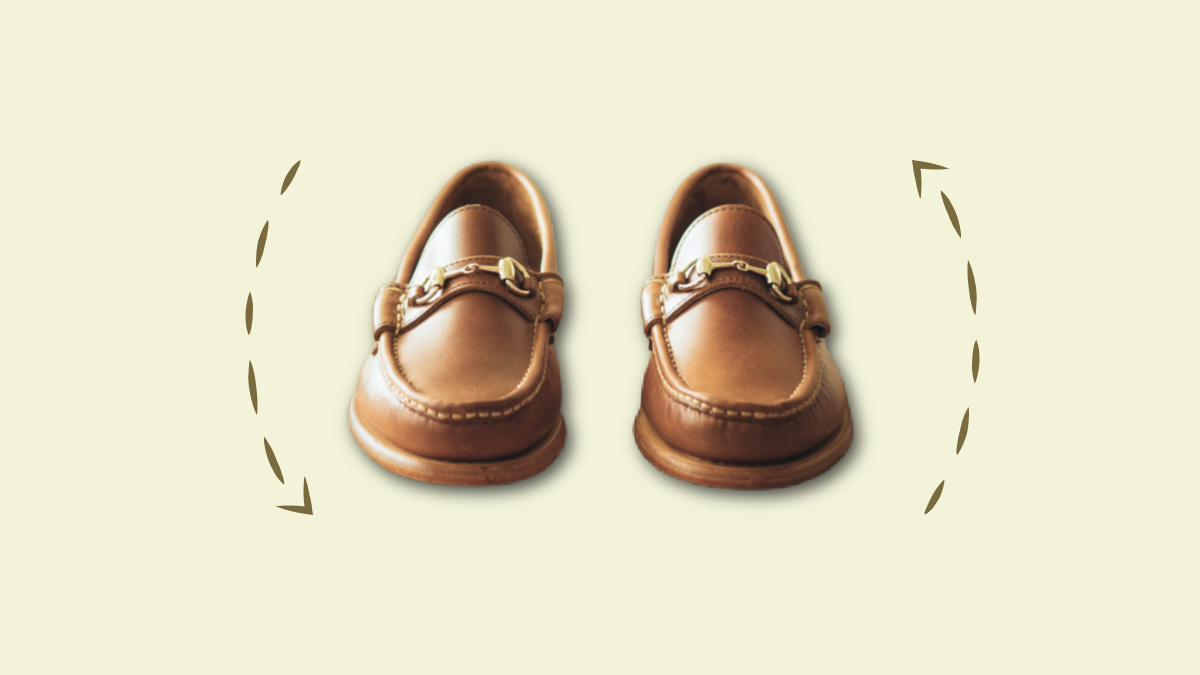
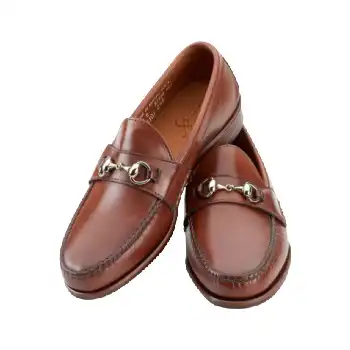
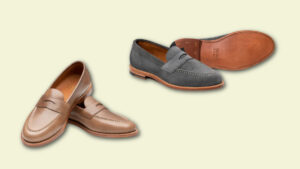
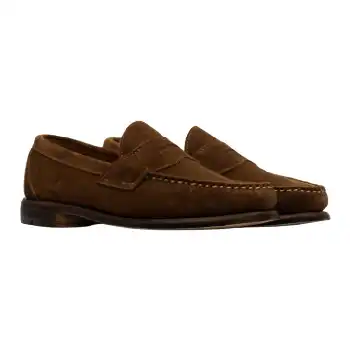
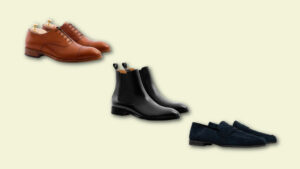
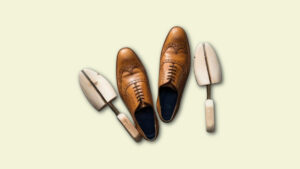

Join the Discussion